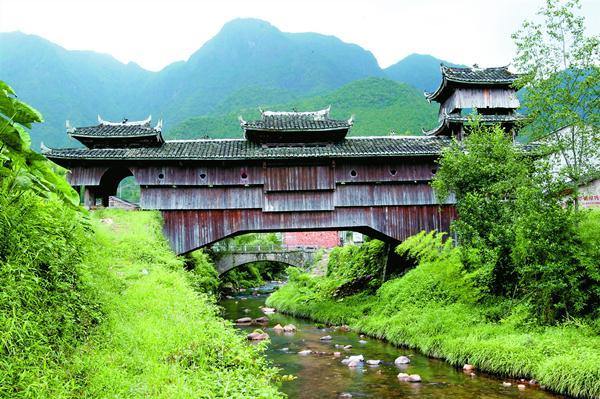
Rulong Bridge in Qingyuan county in Zhejiang province (Photo/IC)
Wooden arcade bridges, often found in East China's Fujian and Zhejiang provinces, are used not only for transportation but also as places to socialize and worship on special occasions.
The "traditional design and practices for building Chinese wooden arch bridges", written by UNESCO on the List of Intangible Cultural Heritage in Need of Urgent Safeguarding in 2009, refers to traditional architectural tools, traditional craftsmanship, "beam-weaving" technology, and mortise and tenon joints. The construction of a wooden arch bridge does not involve a single nail.
The application for UNESCO heritage status was jointly made by authorities of the four counties of Qingyuan, Taishun, Shouning, and Pingnan. Qingyuan and Taishun are respectively administered by the cities of Lishui and Wenzhou in Zhejiang, while Shouning and Pingnan are administered by the city of Ningde in Fujian.
Over the past four years, authorities in the four localities have built 32 wooden arcade bridges, and the number of official inheritors of UNESCO heritage skills has grown from 33 to 52.
In November 2020, a blueprint for the coordinated development of the cultural heritage of arcade bridges was signed by the intermediate people's courts of the cities of Lishui and Wenzhou in Zhejiang and the cities of Ningde and Nanping in Fujian.
Under the agreement, the four cities have established a data-sharing mechanism and are boosting the judicial protection of arcade bridges.
Editor: Huang Yan